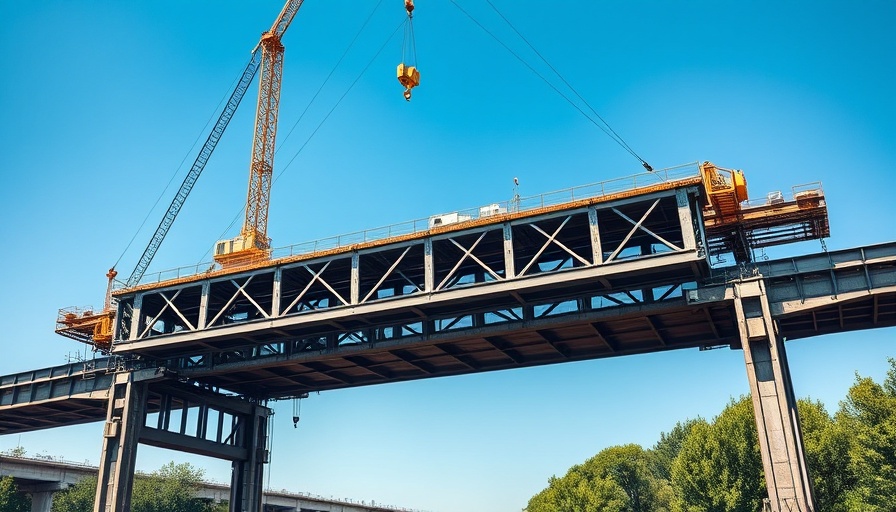
Bridging the Gap in Solar Energy Infrastructure
The installation of a steel beam bridge at the Langford Solar Farm in Devon marks a significant development in supporting renewable energy infrastructure. Acrow Bridge's pre-constructed bridge will facilitate both construction access and ongoing maintenance for the solar farm, which boasts a substantial capacity of 35 MW solar paired with 35 MW of battery energy storage systems (BESS). This innovative installation is more than just a crossing; it symbolizes the integration of engineering and sustainability in the energy sector.
Understanding the Importance of Infrastructure in Solar Projects
The role of infrastructure in solar energy projects cannot be overstated. This steel beam bridge is key in ensuring efficient access to construction sites, ultimately leading to faster deployment of renewable energy solutions. Acrow’s Laura Jones highlighted the versatility and quick setup of their beam bridges, which are designed to support diverse industrial applications—from maintaining vehicle flow to accommodating pedestrian passage. This is particularly important as solar farms often require ongoing maintenance after their completion to ensure operational efficiency.
Enhancing Community Benefits Through Sustainable Energy
Ethical Power, tasked with constructing the Langford Solar Farm, veers away from mere compliance with energy regulations; it actively contributes to local employment and community development. As highlighted by the acquiring of Acrow’s bridge, the project is also focused on minimizing carbon emissions as part of RWE’s broader commitment to achieving net-zero targets. The dual focus on environmental sustainability and community benefit reflects a growing trend among renewable energy initiatives, showcasing how infrastructural development can catalyze local economic growth while addressing global environmental challenges.
A Closer Look at the Bridge Design and Durability
The beam bridge, measuring 13.7 meters in length and 5.49 meters in width, adheres to stringent Eurocode standards (LM1 and LM2), ensuring its integrity and durability. Its hot-dip galvanization treatment enhances its resistance to corrosion, promising a maintenance-free lifespan of up to 100 years. This longevity is not just an engineering marvel but also speaks to the sustainability ethos in construction—using materials that reduce the need for replacements and upkeep. Such decisions impact the overall sustainability profile of solar energy projects, which is increasingly important as stakeholders and consumers demand eco-friendly solutions.
Future Trends in Renewable Infrastructure Development
This latest bridge installation is a harbinger of emerging trends in renewable energy infrastructure development. As the world pivots towards greener energy sources, the demand for quick, efficient construction solutions will escalate. Companies like Acrow are poised to evolve alongside this demand, providing tailored solutions that not only meet project needs but also align with sustainability goals. In this context, understanding the nuances of infrastructure's role in renewable energy becomes paramount for industry stakeholders aimed at enhancing project success.
Conclusion
The installation of the steel beam bridge at the Langford Solar Farm exemplifies the marriage of innovative engineering and sustainable energy development. Not only does it streamline access for ongoing construction and maintenance, but it also embodies the larger narrative of how infrastructure can underpin the shift towards renewable energy sources. Stakeholders in the solar energy sector should capitalize on such innovative solutions to ensure the successful and sustainable rollout of solar projects.
 Add Row
Add Row  Add
Add 




Write A Comment